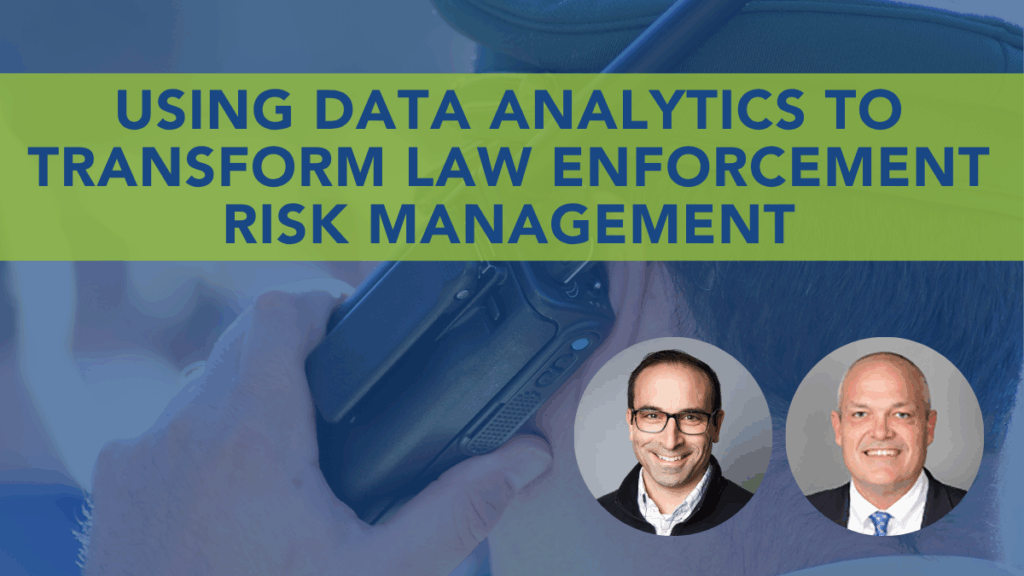Implementing Policing Technology to Make a Difference in Officer Wellness
Posted
June 13, 2019
Share:
Historically, officer wellness has been viewed as the physical fitness of an officer. Today’s agencies recognize it’s important to show officers how to take care of both their bodies and mind. Emerging technology can help agencies better understand how the stresses of policing affect an officer’s mental health and provide guidance on how leadership can support personnel before the stakes are raised by a critical incident.
The Officer Wellness Conversation
According to the Law Enforcement Mental Health and Wellness Act: Report to Congress, published in March, 2019 by the Office of Community Oriented Policing Services (COPS Office),
“Good mental and psychological health is just as essential as good physical health for law enforcement officers to be effective in keeping our country and our communities safe from crime and violence.”

At the recent International Association of Chiefs of Police (IACP) Technology Conference, it was shared that when an officer is in the academy, they are not trained, nor prepared for, the traumatic experiences they may encounter on the job. From those experiences, officers may experience negative effects of trauma exposure, leading to changes in behavior. According to IACP’s website, “In order to protect the communities they serve, law enforcement officers must receive the tools and resources they need to protect their own health and safety.”
As a result, police departments across the country are revisiting how they structure officer wellness programs. In addition to providing access to mental health experts, agencies are evaluating existing treatments like EMDR that have been found helpful in treating cases of PTSD. Early Intervention Systems (EIS) also help agencies identify officers likely to need additional support before an officer recognizes or experiences symptoms from stress or PTSD.
Early Intervention Systems: Transparency is Key
The early intervention system was created to help agencies identify officers behaving in ways suggesting an underlying issue. They can also be used to promote officer safety and wellness. But not all systems are created equal.
The reality of early intervention systems today is that more often than not, they are threshold-based systems that are based on fairly simple triggers. For example, if an officer has had three use-of-force incidents in the last six months . . . or if they’ve taken more than 10 days of sick leave in the past two months . . . a flag gets raised. And the problem with that simple system is that it’s almost always inaccurate. And it creates two types of critical errors — false positives and false negatives.
The hard truth is that these systems are probably flagging behavior that doesn’t necessarily signal a real problem requiring intervention — or worse yet, is missing behavior that does. And that’s not good when you’re trying to identify and address officer wellness issues as well as the necessary remedies and interventions.
EIS that makes a difference
EIS are not new to police agencies. In a Law Enforcement Management and Administrative Statistics (LEMAS) survey, 65 percent of surveyed police departments with 250 or more officers had an EIS in their agency. Unfortunately, most of those systems probably aren’t providing the reliable, timely and above all — accurate information they need to help those in their charge when they need it most. Therefore, it is critical for agencies to not only have an EIS in place, but to implement a system that is smart and improves as it continuously collects data, making a transformative difference in the agency.

Early intervention systems supported by research utilize multiple data points to provide contextualized analysis of trends and behavior that could affect an officer’s performance. As a result, agencies are able to identify officers more likely to engage in problematic behavior before the behavior occurs and provide these officers additional training, resources or counseling targeting opportunities for improvement.
Sometimes these behaviors are the result of trauma from the job, and sometimes it is for other reasons that may be captured within the data engine of the system. Regardless of the root cause, the result is being able to pre-emptively step in to get a potentially off-track officer back on track.
At the 2019 Major City Chiefs Association (MCCA), Police Executive Research Forum (PERF) and FBI National Executive Institute Associates (NEIA) 2019 Joint Meeting, members of MCCA joined a panel to discuss the issues and opportunities impacting their respective agencies and cities. The conversation included how departments are using new technology like drones and facial recognition, navigating relationships with federal and local government agencies, and ways police leadership can better support officers. One chief spoke to the benefits of EIS, noting the importance of having technology to surface critical patterns and trends in officers.
Agencies will be able to utilize data to further support training needs, misconduct or policy concerns within the department, and supervisors and commanders will have the ability to continuously review and compare data. Agencies will also be able to uncover new insights and lessons learned in the department – resulting in a proactive approach to the wellness of all their officers.
Related Posts
Ready to Experience the Benchmark Difference?
Benchmark Analytics and its powerful suite of solutions can help you turn your agency’s challenges into opportunities. Get in touch with our expert team today.



